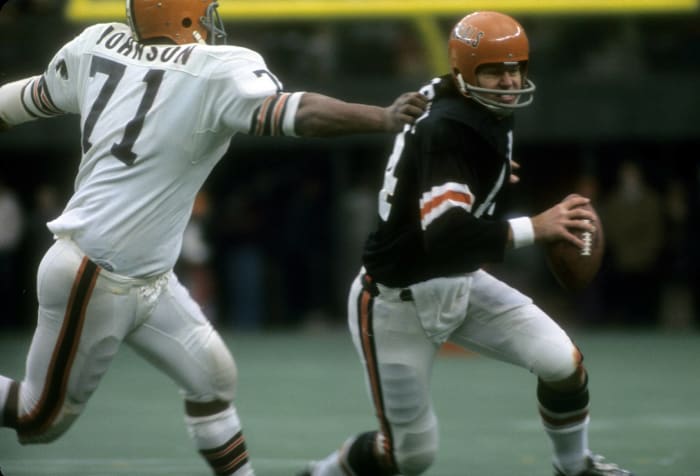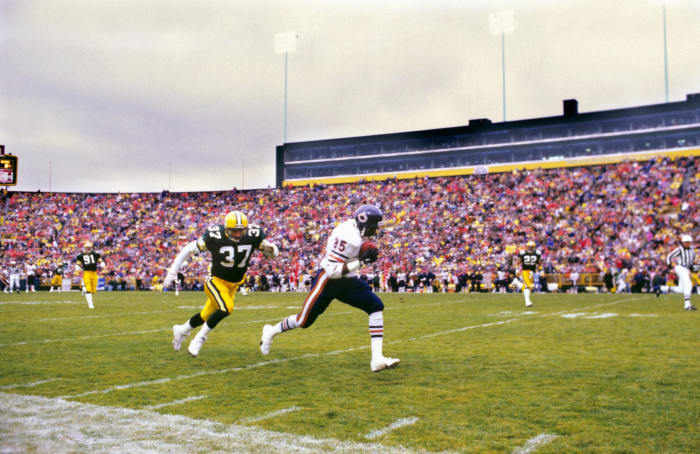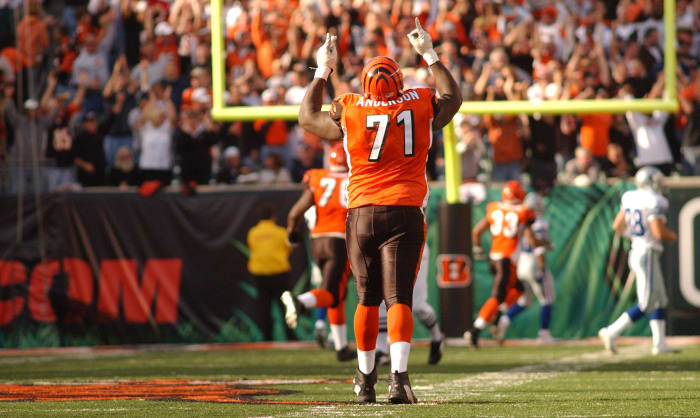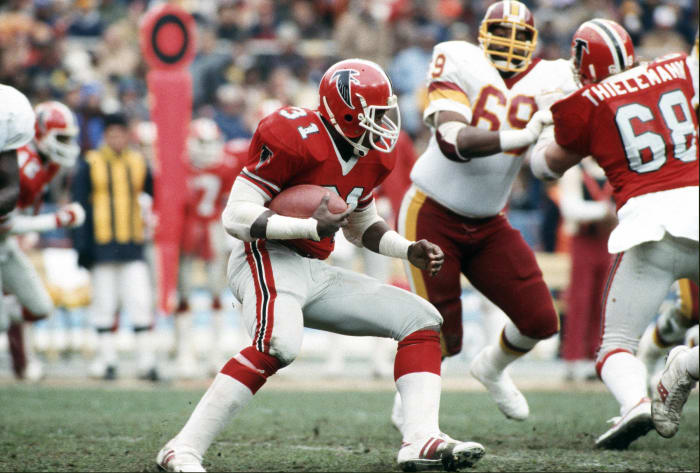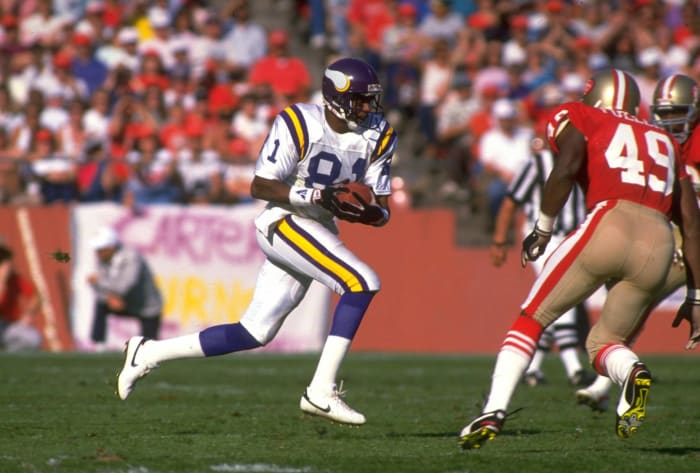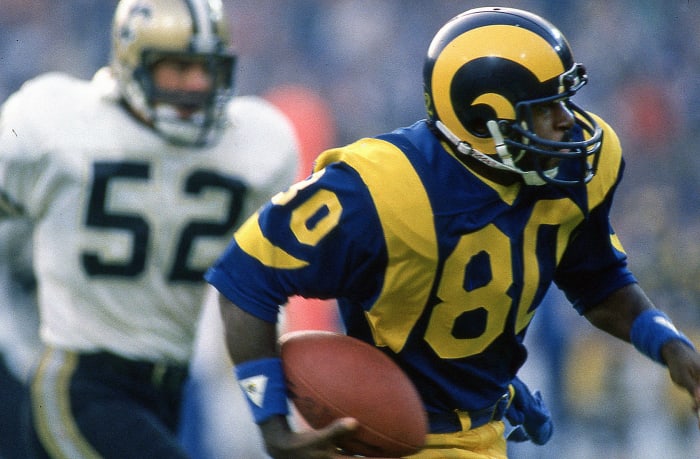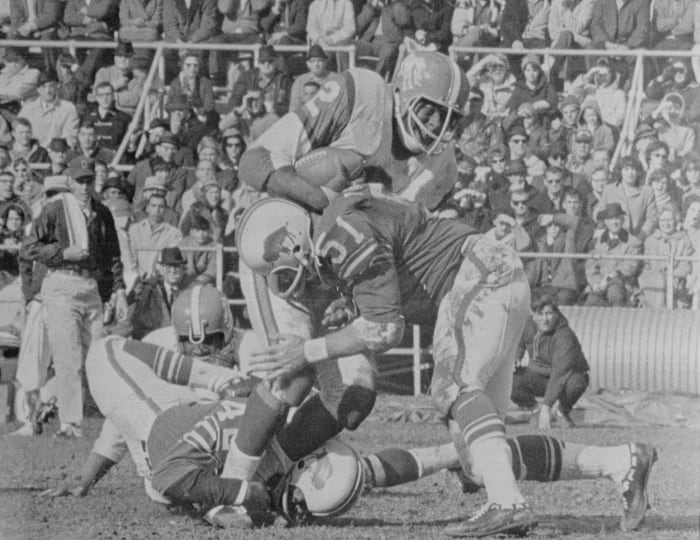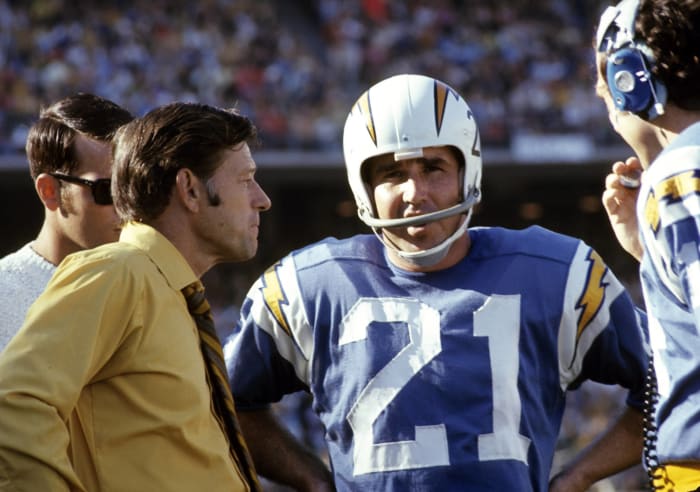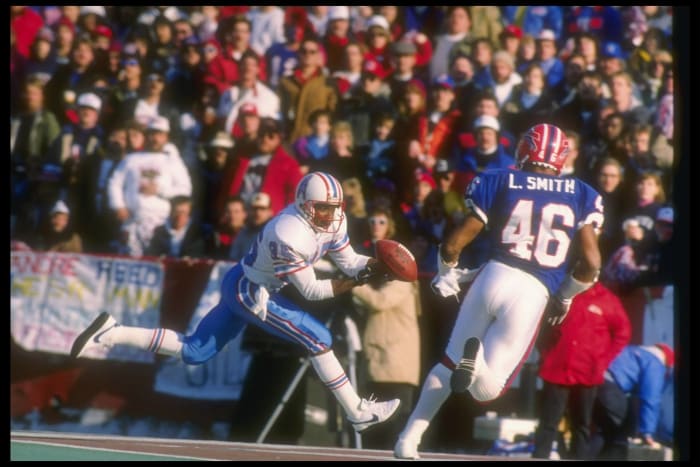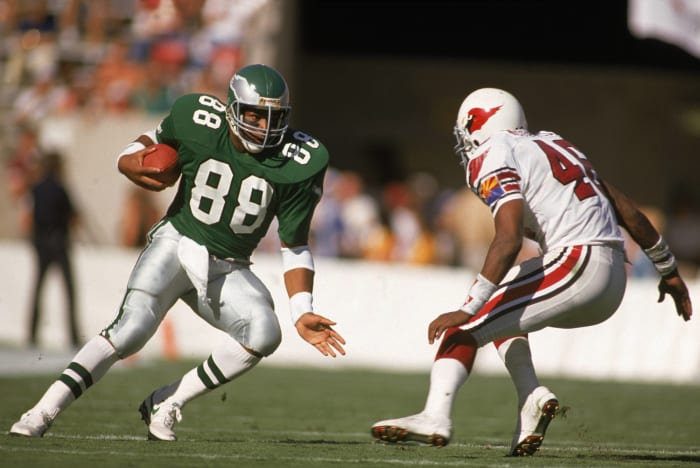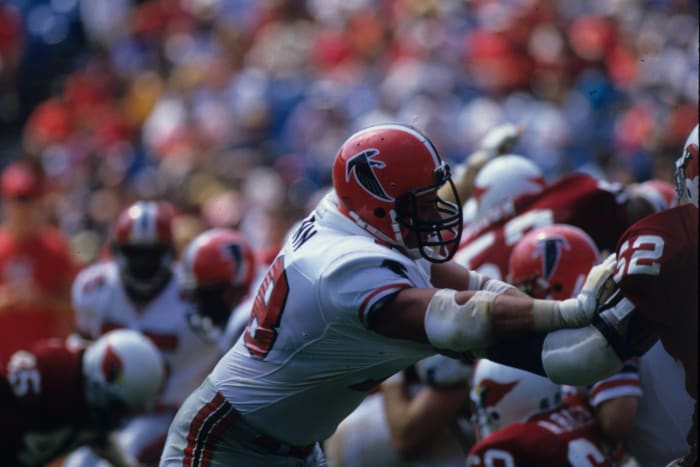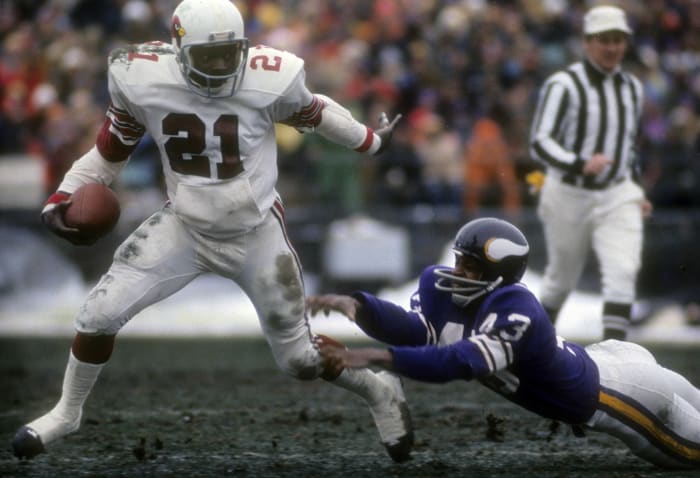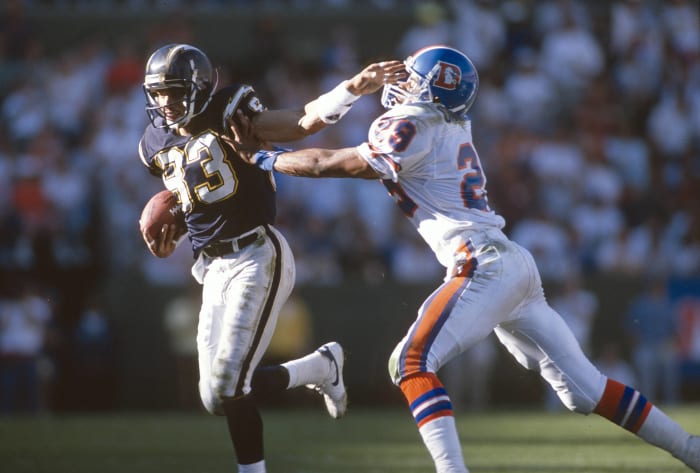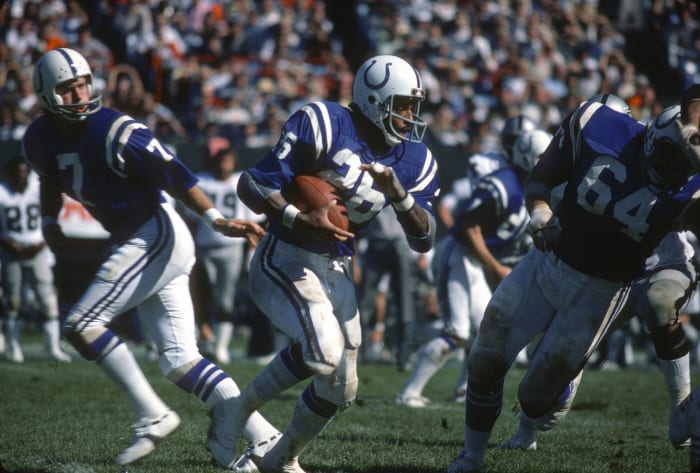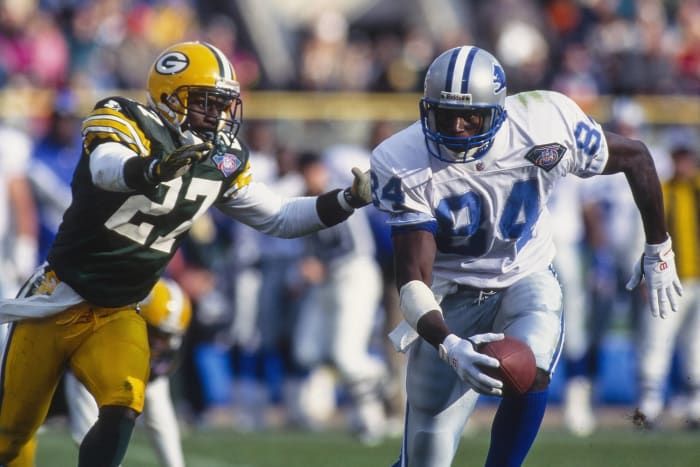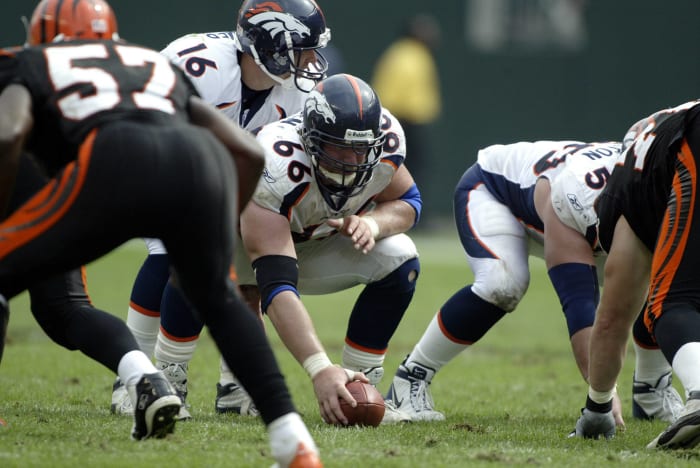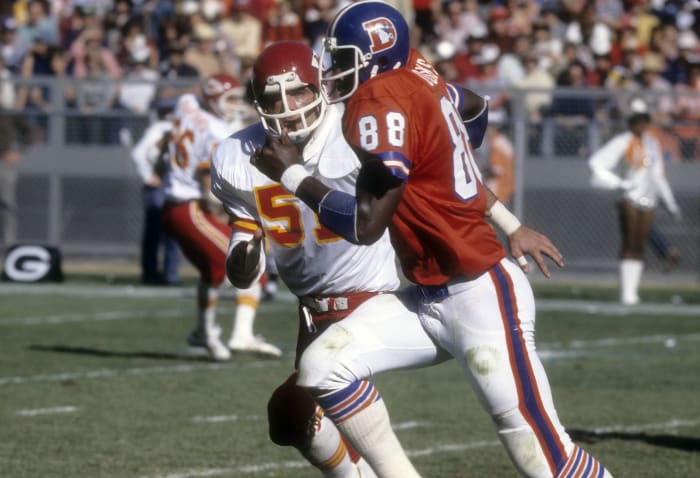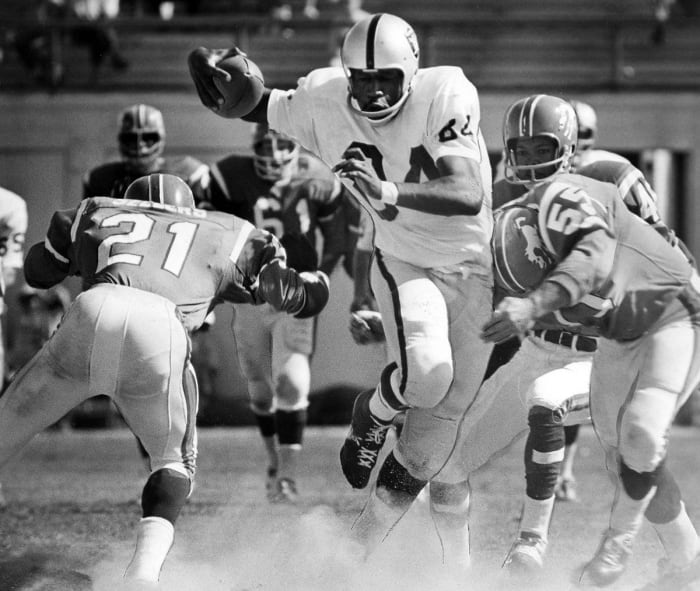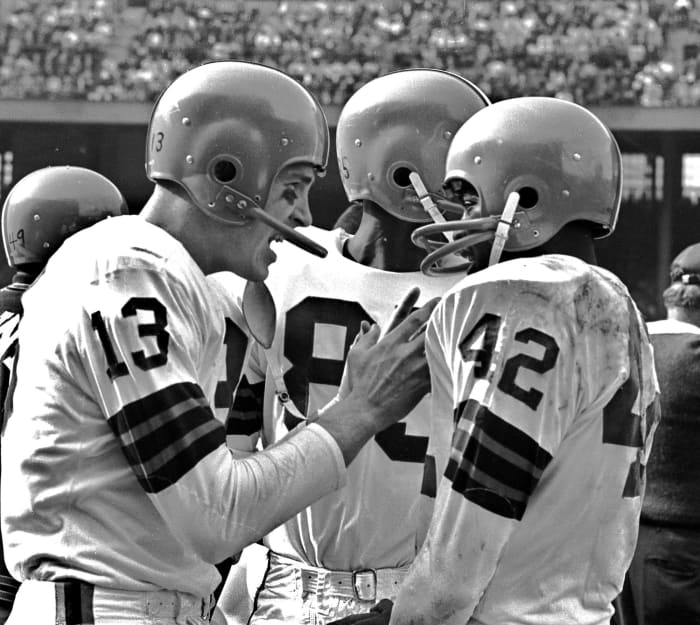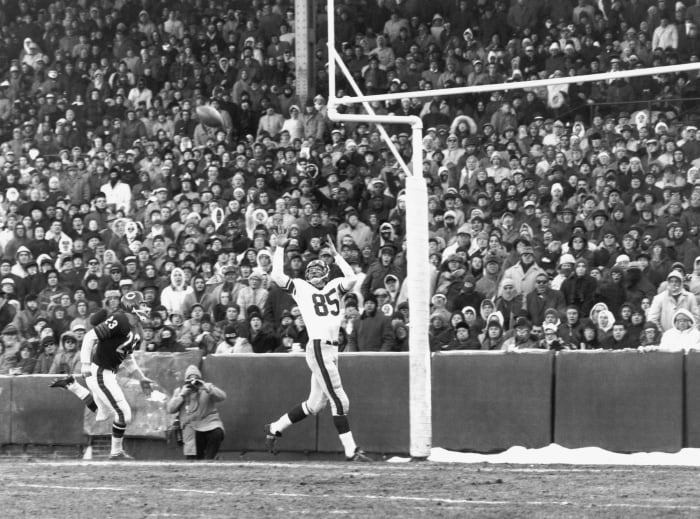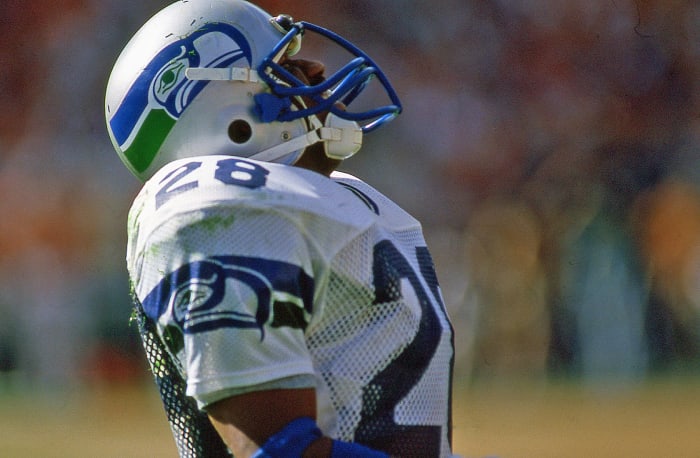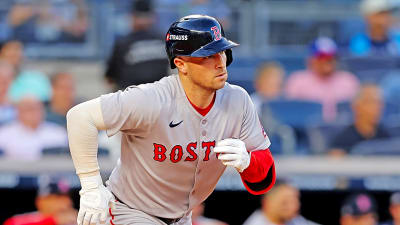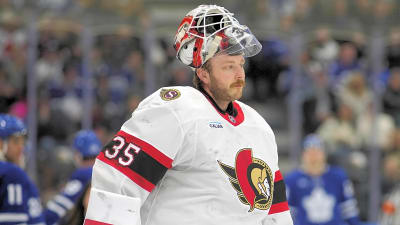Sports have a way of ensuring some stars are remembered for generations while other standouts' legacies are overlooked. This occurs often in a sport with 22-man lineups. Here are some of the NFL (or AFL) offensive greats whose quality careers have, to some degree, slipped through the cracks. No Hall of Famers or one-year wonders here, just high-end performers who were among their era's best.
Focus on Sport-Getty Images
The first quarterback to run a Bill Walsh offense long-term, Anderson excelled during and after the future coaching legend's time as a Bengals assistant. Cincinnati's starter for 13 seasons, Anderson enjoyed a breakout 1974 under Walsh and piloted the Bengals to four playoff berths. He made four Pro Bowls and led the NFL in passer rating four times. Anderson's masterpiece came in 1981, when he rebounded from injury to win MVP honors before outplaying Dan Fouts in the '81 AFC title game (The "Freezer Bowl") en route to Super Bowl XVI. Anderson endured a mid-career slump but was one of the most important players in Bengals history.
Ronald C. Modra-Getty Images
It took the Bears much longer to replace Anderson than it did for them to find Walter Payton's successor. Joining the Bears in 1986 and replacing an icon led to Anderson being overlooked, but he turned in several quality seasons (four Pro Bowls) and was one of his era's most versatile backs. The post-Jim McMahon Bears did not feature much in the passing game and often used Anderson as a key aerial chain mover. His 6,166 rushing yards rank third in Bears history, but the 20 TD catches stand out for the era. (Eric Dickerson and Barry Sanders combined for 16.) The ahead-of-his-time back served as Chicago's starter for seven seasons.
Ronald C. Modra-Getty Images
Our third Anderson received more notoriety, but it came late in his career. Ottis/O.J.'s prime flew under the radar. A plodding power back with the Giants who won Super Bowl XXV MVP acclaim, Anderson brought more shake to his game with the Cardinals. His St. Louis years came after Don Coryell's departure -- in the heart of a tough Cards era -- but he would have begun his career with six 1,100-plus-yard seasons had the 1982 players' strike not intervened. The Cards' struggles limited Anderson's exposure; he only went to two Pro Bowls and did not eclipse double-digit TDs in a season until his Giants years.
Howie McCormick-Icon Sportswire
The largest of this list's Andersons, Willie had multiple factors working against him for fame. He was in the same age bracket as Hall of Fame left tackles Jonathan Ogden, Orlando Pace and Walter Jones. And he played for the Bengals. Modern right tackles are often ignored, and the Canton-enshrined trio made missing Anderson easier. The giant yet swift blocker played in one playoff game in 12 Bengals seasons but helped open holes for Corey Dillon for several years, aiding Dillon to a single-game rushing record in 2000. Pro Bowl voters recognized Anderson four times, but not until he was 28. On a better team, Anderson pushes for Canton.
Focus on Sport-Getty Images
Few backs could claim superiority to Andrews in his early-1980s prime. The Falcons fullback displayed incredible versatility from the jump, showcasing a power-speed blend that made him a fearsome tackling task and allowed him to thrice surpass 500 receiving yards -- including in a nine-game 1982. Andrews is simply one of the most underrated players in modern NFL history, topping 2,000 scrimmage yards twice but toiling for mostly mediocre Falcons teams. A 1984 practice injury that shredded knee ligaments and caused nerve damage forced Andrews to miss two full seasons. But he was a premier talent for several years.
Focus on Sport-Getty Images
Of the 48 players to win the AP MVP award, Brown is probably that decorated club's most forgotten player. Injuries cut Brown's prime off at around five seasons, but he was the engine behind multiple Washington playoff berths. His 1972 MVP season (101 rushing yards per game; 261 total in the playoffs) powered Washington to Super Bowl VII, but the '72 Dolphins' perfect season sort of overshadowed it. An eighth-round Vince Lombardi discovery who played the role of the young star for George Allen's "Over the Hill Gang" teams, Brown was the total package before injuries slowed him. He helped usher in a run-centric era.
Otto Greule Jr.-Getty Images
Cris Carter and Randy Moss' Hall of Fame ascents obscure Carter's shorter run of dominance, but he was the ace weapon for a few quality Viking teams. The Vikings turned to the former Michigan and USFL star immediately; the slender playmaker suited up for a preposterous 33 games in 1985 (17 USFL, 16 NFL). Carter's 1987 (24.3 yards per catch, 922 yards in 12 games and a 227-yard detonation that keyed a playoff upset of the No. 1-seeded 49ers) is an all-time campaign, and the three-time Pro Bowler remained productive into the 1990s. Had the talented late-'80s Vikings reached a Super Bowl, Carter would be remembered differently.
Owen C. Shaw-Icon Sportswire
When Ellard retired in 1999, his 13,777 receiving yards ranked third all time. The Rams' move to St. Louis and the careers of Isaac Bruce and Torry Holt helped diminish the L.A. standout. Even during Ellard's era, teammate Flipper Anderson set the still-standing single-game receiving yardage record. But Ellard drove the Rams' aerial attack for many years, using his elite speed to be a deep and run-after-catch threat for a team that changed its approach post-Eric Dickerson. The 5-foot-11 wideout delivered seven 1,000-yard seasons -- the final three in his mid-30s with mediocre Washington QBs throwing him passes.
Bettmann-Getty Images
Gilchrist played 12 pro seasons without playing in college, and he helped deliver the Bills their first championship. A fullback with tailback speed and lineman size (for his era), the 251-pound bulldozer was a nightmare to tackle. He led the AFL in rushing touchdowns in each of his first four seasons, earned league MVP honors in his 1962 rookie slate and set the AFL's single-game rushing record with a 243-yard showing a year later. Gilchrist totaled 144 yards in the Bills' first championship triumph in 1964. Clashes with Bills management led Gilchrist to Denver, where he still earned All-AFL acclaim for a bad Broncos team.
Todd Rosenberg-Icon Sportswire
Starring during a rare period that did not involve a Packers NFC title game run, Green was one of the 2000s' best backs. Despite playing alongside Brett Favre and totaling six 1,000-yard seasons, Green's star has dimmed some. But he is the Packers' all-time rushing leader (8,322 yards) whose 1,883-yard 2003 apex is far and away a team record. Green added 20 TDs in '03, but Jamal Lewis' 2,000-yard slate and Priest Holmes' dominance left him off the All-Pro first team. A speedster who was a reliable aerial outlet, Green is also one of just three backs -- along with Bo Jackson and Derrick Henry -- with two 90-plus-yard rushing TDs.
Charles Aqua Viva-Getty Images
Offensive innovator Sid Gilman turned to Hadl as the pointman of his revolutionary Chargers attack, and after succeeding Tobin Rote, the younger passer led the Bolts to the 1965 AFL title game. Hadl won three passing titles as a Charger, the third in the expanded NFL in 1971, and made his former team pay by earning first-team All-Pro recognition as a Ram in 1973 after an offseason trade. While the Packers trading two first-round picks (and more) for a 34-year-old Hadl in 1974 did not work out, the six-time Pro Bowler/AFL All-Star retired third on the all-time passing list three years later.
Rick Stewart-Getty Images
Shifty wideout mate Ernest Givins also qualifies, but the elder statesman of Warren Moon's Oiler troops was his No. 1 target. Givins and Hill remain first and second on the Titan franchise's all-time receiving list. At just 5-foot-9, 170 pounds, Hill led the Oilers in aerial yardage for five straight years (1985-89). He finished with five 1,000-yard seasons -- the final two at age 34 and 35 for the Oilers' early-'90s Run and Shoot teams -- and was one of his era's premier weapons. The former Rams backup received new life upon being traded to the Oilers in 1985, and he ended up helping Houston to five consecutive playoff berths.
B Bennett-Getty Images
Jackson thrived in a run-heavy NFL era, and for a player who ranked second all time in receiving yards (10,372) when he retired, he certainly does not come up often enough. A 12th-round pick in 1968, Jackson thrived for three teams -- the Eagles, Rams and Patriots, recording 1,000-yard seasons for each in the 1970s -- after trades. Nomadic success was not exactly a thing before true free agency, but the elusive playmaker produced regardless of system. Jackson led the NFL in receiving twice in Philly, made three Pro Bowls back in L.A. -- a '70s playoff mainstay -- and succeeded in his early 30s for run-oriented Patriots teams.
Mike Powell-Getty Images
The most talented of Randall Cunningham's weapons in Philadelphia, Jackson is one of the few players in NFL history to earn first-team All-Pro honors in his first three seasons. Yet, he is rarely mentioned among modern tight end talents. Jackson went off the 1988 draft board 13th overall despite playing in Oklahoma's option system; his arrival helped push Philly to four playoff berths in his five-season stay. Jackson later picked up Pro Bowl honors with two more teams -- Miami and Green Bay -- and caught 10 TD passes for the Super Bowl champion Packers in his 1996 farewell season.
Gin Ellis-Getty Images
Three different running backs made the Pro Bowl for the Falcons in the 1980s, despite the team's struggles. They then morphed into a Run and Shoot attack in 1990 and made the playoffs when quarterback Chris Miller went to his only Pro Bowl a year later. Kenn was there at left tackle throughout. The five-time Pro Bowler played 17 seasons and a Falcons-most 251 games. The premier pass protector earned All-Pro honors 11 years apart (1980 and '91) and certainly helped the likes of William Andrews, Gerald Riggs and John Settle emerge as '80s Pro Bowl backs. But the Hall of Fame has eluded Kenn.
Focus on Sport-Getty Images
Don Coryell's Chargers offenses receive more publicity; his first NFL head-coaching stay is rarely discussed. The mid-1970s Cardinals broke through amid decades of misery, winning the NFC East in 1974 and '75. Metcalf was those teams' top weapon and a highlight machine for a five-year period. While Metcalf was an elite fumbler (62 in six seasons), the running back/returner received MVP votes in 1974 and '75 for his all-around production. Eighteen of Metcalf's 36 career TDs were from beyond 20 yards, and his 2,462 all-purpose yards in '75 set an NFL record. The electric talent cut his NFL prime short in 1978, signing with the CFL.
Focus on Sport-Getty Images
One of the AFC's best receivers for many years, Miller's name has fallen too far off the radar. He may not even the most famous wideout named Anthony Miller presently . Miller narrowly missing two Super Bowl teams (the 1994 Chargers and '97 Broncos) and the Bolts losing a sizable chunk of fans after moving made him a candidate to fade quicker. But the five-time Pro Bowl speed merchant carried the Bolts' passing attack after its Air Coryell cogs retired and in 1994 signed to become the most famous receiver John Elway had played with to that point. Miller's 14-TD 1995 aside, the Broncos cut him prior to their '97 Super Bowl season.
Focus on Sport-Getty Images
Mitchell's role in expanding the running back position's boundaries goes overlooked, but his multidimensional capabilities propelled the Colts during their final run as a Baltimore-based playoff presence. Skilled at negotiating defenders on the second and third levels, Mitchell set an NFL running back record with 72 catches in 1974 -- after catching just 17 passes in '73. Mitchell led the NFL in receptions in 1974 and '77. A three-time Pro Bowler, Mitchell was Bert Jones' top playmaker for three straight playoff teams. Had these Colts not run into historically great Steelers and Raiders teams, their cast would be better remembered.
Joe Robbins-Getty Images
Moore has as many first-team All-Pro nods (three) as contemporaries Tim Brown, Cris Carter, Michael Irvin and Andre Reed combined. All are Hall of Famers. A shorter prime denied Moore that path, but he was a unique weapon in the mid-1990s. Joining Barry Sanders in making the Lions a '90s playoff mainstay, the 6-foot-4 Moore was a rare player who doubled as a jump-ball maven and a volume machine. Moore topped 100 catches each year from 1995-97; his 123 in '95 set an NFL record that stood seven years. Injuries slowed Moore in the late '90s, and Megatron eclipsed his stature a bit. But Moore's apex is underappreciated.
Thomas E. Witte-Icon Sportswire
Centers are not stars, but Nalen deserves more recognition than he will end up receiving. He was the lone on-field constant for a Broncos run game that saw six rushers surpass 1,000 yards from 1995-2006, being there for Terrell Davis' Hall of Fame trajectory all the way through Tatum Bell's '06 slate ending the zone-blocking assembly line's run. Nalen actually did a lot to avoid being noticed; the five-time Pro Bowler notoriously refused interviews and led other Denver O-linemen to follow suit. But the former seventh-round pick became the linchpin of one of his era's most reliable units, keeping it elite despite roster turnover.
Focus on Sport-Getty Images
A freak athlete, Odoms spent most of his career being the primary issue for opposing defenses when the Broncos threw the ball. The former No. 5 overall pick posted numbers that outpace Hall of Famers from his era, besting Charlie Sanders in receptions, yards and TDs and Dave Casper in catches and yards. Odoms made four Pro Bowls, was twice the first-team All-Pro tight end (1974 and '75) and led all tight ends in catches and yards from 1973-78. Though the Broncos of this era are remembered for their Orange Crush defense, Odoms played a key role in the 1977 team booking the franchise's first Super Bowl berth.
Digital First Media Group/Oakland Tribune-Getty Images
The AFL's wide-open attacks led to some bloated receiving numbers, but Powell -- the first great Raiders receiver -- saw his resume fade a bit after the careers of Fred Biletnikoff and Cliff Branch. But for a stretch in the 1960s, Powell was a lethal target. He dominated with two franchises, dropping two 1,100-yard seasons as a New York Titan (going stride for stride with teammate Don Maynard) and then scoring double-digit touchdowns in four straight seasons after signing with the then-Al Davis-coached Raiders in 1963. Powell's 81 career TD grabs, despite all of them coming in an eight-season span, remained top 10 into the 2000s.
Paul Tepley Collection/Diamond Images-Getty Images
Jim Brown and Paul Warfield's presences on the most recent Browns championship team relegates Ryan to trivia-question relevance outside of Cleveland. But he played a big role in steering the team to post-Paul Brown prominence. The Browns acquired Ryan from the Rams in 1962, and he led the NFL in TD passes in both the Browns' 1964 championship season and 1966 (25 and 29, respectively). He threw three TDs in Cleveland's shutout win over Baltimore in the '64 title game -- Brown's only title as well -- and made three Pro Bowls. A shoulder injury in the first of those all-star games sidetracked Ryan, whose QB1 run stalled by age 31.
Robert Riger-Getty Images
This is a strange one. Shofner dominated for the Rams and Giants en route to five All-Pro honors and a first-team slot on the 1960s' All-Decade team. He is the only first-team All-Decade receiver from the 1950s-2000s yet to be inducted into the Hall of Fame. An elite deep threat with reliable hands, Shofner led the NFL in receiving as a Ram in 1958. Upon being traded to the Giants in 1961, Shofner helped them appear in three straight NFL championship games with three 1,100-yard seasons. Injury issues stalled Shofner by his late 20s, but it is strange he did not garner strong Canton consideration given his impact.
Owen C. Shaw-Icon Sportswire
Working against Warner's Q rating: a 1984 ACL tear stripped away some of his form; the 1980s Seahawks were perennially good, not great; the franchise has employed an MVP running back (Shaun Alexander) and Marshawn Lynch; "Tecmo Super Bowl" buried Warner as a Rams fullback; there is a better player named Kurt Warner. But do not sleep on the OG version. Curt steered Seattle to the 1983 AFC title game and delivered another 1,400-yard rushing season three years later despite the knee injury. The three-time Pro Bowler was one of the 1980s' better backs and a copilot (alongside Steve Largent) on some quality Hawks offenses.
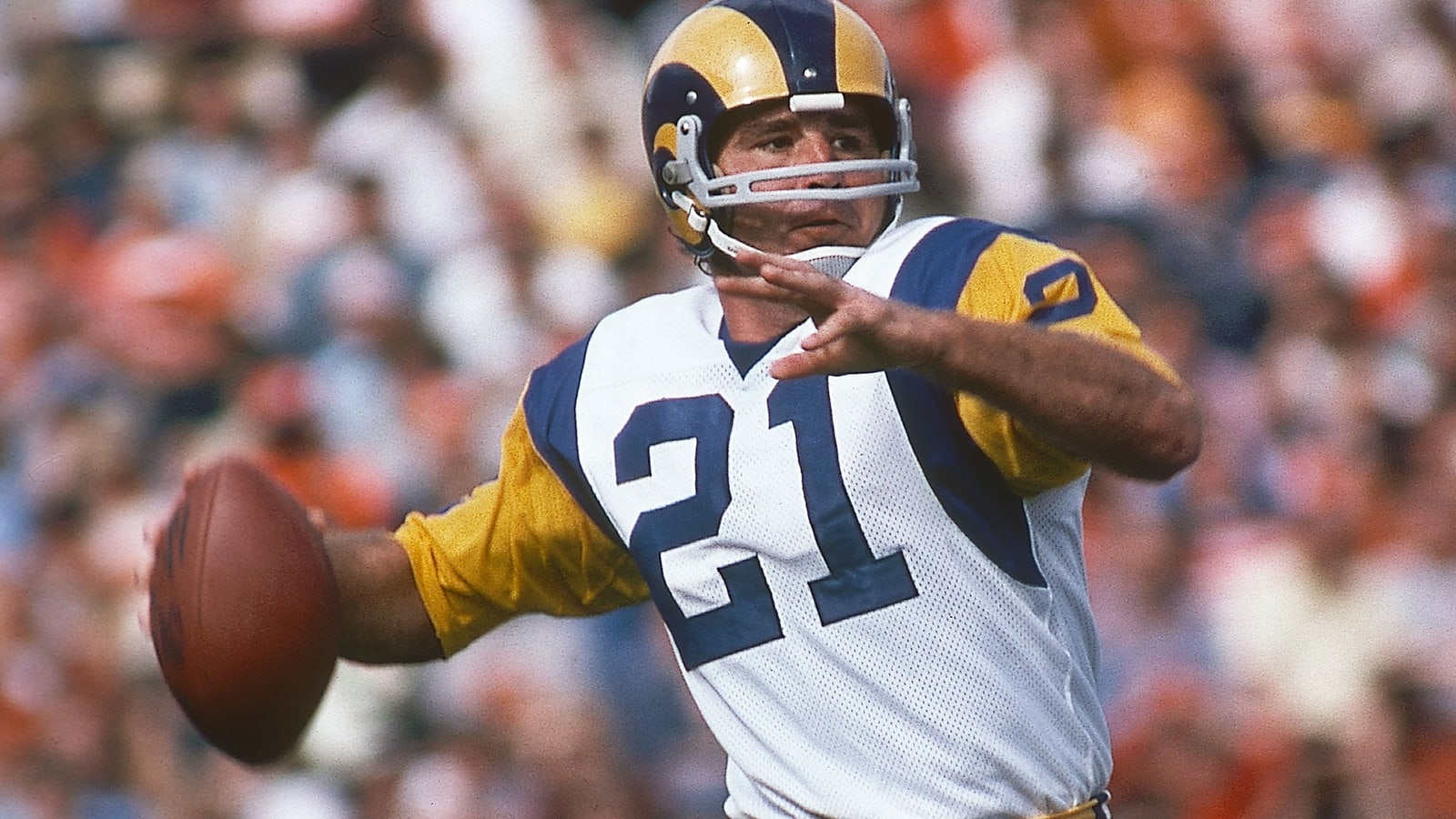
 +
+
